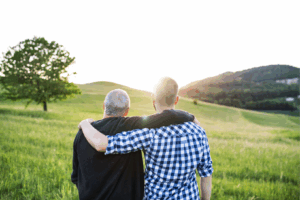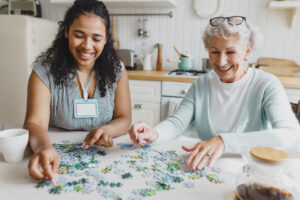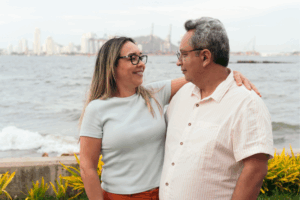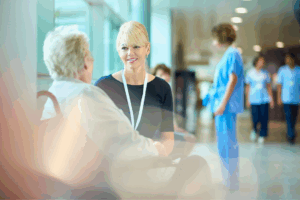We don’t usually hear the words “seniors and fitness” together, but perhaps we should! People need to exercise at every age, and older adults are no exception. Even if you’ve never been big on working out, it’s never too late. Exercise has been shown to prevent numerous health problems, including high blood pressure and obesity.[1. “Physical Activity Fundamental To Preventing Disease,” June 20, 2002, https://aspe.hhs.gov/health/reports/physicalactivity/] It bolsters immunity so that you get fewer contagious illnesses, and may even improve your sleep quality.
However, as our bodies age, our exercise needs and abilities can change. It’s not uncommon for energy and strength to wane. Also, certain ailments can make exercising difficult or just plain unpleasant. But that doesn’t mean you have to resign yourself to being in poor physical condition for the rest of your life. When it comes to seniors and fitness, see how you can adapt to keep in great shape!
How older adults can modify their exercise routines
Many people who have health problems are afraid to exercise, for fear of making their condition worse.[2. “Elderly people should not be afraid to exercise,” March 13, 2006, https://www.news-medical.net/news/2006/03/13/16562.aspx] But the truth is, many conditions can actually benefit from a workout! You just need to customize it to suit your body’s needs and abilities.
Bone and joint issues
Many individuals with bone and joint issues (such as arthritis) find swimming and low-impact aerobics a helpful way to stay fit. When you swim, your body’s weight is buoyed up by the water, putting less stress and pressure on your bones and joints. With low-impact aerobics, you can make small changes to ordinary exercises so that they’re better for you.
One example is jumping jacks. Ordinarily, jumping jacks can make joints swell painfully in arthritic patients. However, by moving one foot out at a time and raising your opposite arm (instead of moving both arms and legs at once), you can decrease the pressure on your joints.
For bone issues, if you have osteoporosis, your doctor may want you to go for a bone density scan before committing to an exercise program. This is done to determine the degree of bone loss you may have. Your routine can be tailored so that it does not put stress on your bones, and avoid over-stretching your muscles.
Heart disease
Many times, those who suffer from heart disease are reluctant to begin an exercise routine. They fear that raising their heart rate will have negative repercussions. However, your physician can determine a healthy target heart rate with a simple test performed on a treadmill. When you know what that rate is, you can plug it into a heart rate monitor while you’re exercising (many exercise machines also have built-in monitors). If you see that the rate is too high, simply slow down until it decreases into the safety zone.
Diabetes
Having diabetes means checking your blood glucose levels before and after exercising. While moderate exercise can lower your blood glucose level, vigorous exercise may actually raise it. Once you know how different fitness routines affect your levels, you can customize the routines so that they work for you. If you take insulin, you may want to monitor these levels closely as well, since exercise can affect how much insulin you need.
Seniors and fitness: how to put the two together safely
There can be no doubt that seniors and fitness go together like peas and carrots! However, as you can see, there are also special considerations you must take to prevent injury. If you experience pain, nausea, dizziness, or extreme fatigue while exercising, stop immediately and call your physician. Don’t try to increase your fitness level all at once, but do so slowly, over time. By following these tips (and any other advice your doctor has), you can boost your overall health – no matter what age you are!
If you are unsure of how to best help an aging loved one, the trained and compassionate staff at the Institute on Aging is here to help you make that decision and gain the best in at-home care for older adults. Contact us to find out more.







